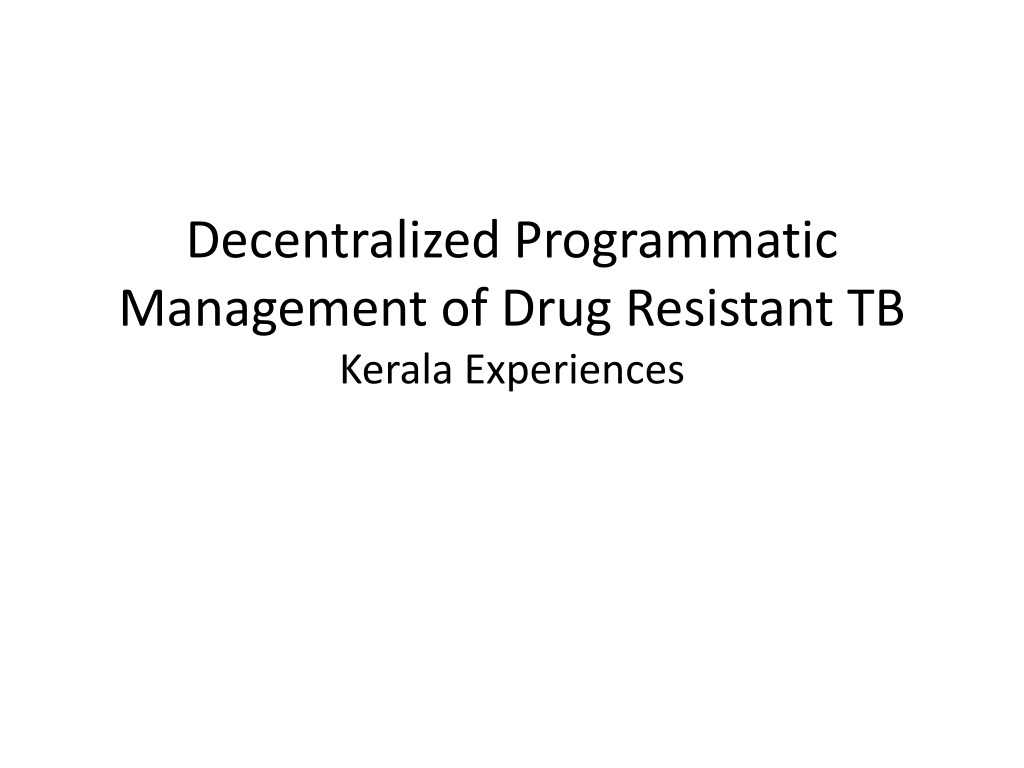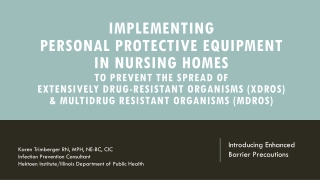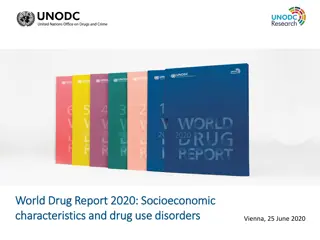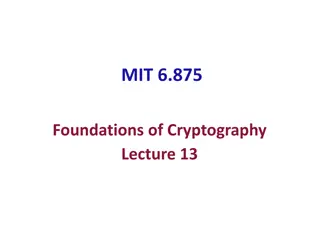Decentralized Programmatic Management of Drug Resistant TB
This paper explores the decentralized and programmatic approach adopted in Kerala to manage drug-resistant tuberculosis based on the experiences gained. It delves into the challenges faced, strategies implemented, and outcomes achieved in the context of combating this public health issue. The study sheds light on the importance of decentralized programs in effectively addressing drug-resistant TB and provides insights for future policy and program development.
Download Presentation

Please find below an Image/Link to download the presentation.
The content on the website is provided AS IS for your information and personal use only. It may not be sold, licensed, or shared on other websites without obtaining consent from the author. Download presentation by click this link. If you encounter any issues during the download, it is possible that the publisher has removed the file from their server.
E N D
Presentation Transcript
Decentralized Programmatic Management of Drug Resistant TB Kerala Experiences
Background Multi Drug Resistant TB (MDRTB) patients are conventionally initiated on second line anti-TB treatment in the state level tertiary care centres (DRTB centres). Pre-treatment lab investigations and clinical evaluation have to be done in the DRTB centre in this model. They are then kept in the wards for a week to monitor for adverse drug reactions (ADR). Domiciliary treatment under supervision follows for the entire treatment duration of 24 to 27 months. Patients unwilling or unable to travel to DRTB centres may be lost to treatment or the treatment may be delayed in centralized model.
Centralized management model Advantages Disadvantages Availability of all investigations under one roof Multidisciplinary specialist care High standard nursing care Standardized management of co-morbidities Standardized airborne infection control practices Availability of ancillary drugs, nutritional support etc. Patient group interactions Availability of more HR Patient and relatives travel long distances- More morbidity air sharing during long public conveyance Over crowding of indoors- airborne infection issues patient waiting for admission resulting in delay in treatment Cost of travel incurred Loss of wages by relatives/patient
Kerala has tried to develop a decentralized model for MDRTB management preserving the advantages and reducing the disadvantages of centralized model
Kerala- steps for decentralization Step 1- Decentralization of pre-treatment lab investigations Stock taking of public lab facilities. Gone for free lab investigation for MDRTB patients. Reimbursement for investigations, not available in public sector labs. Patients were sent to DRTB centres with lab reports. This step has reduced indoor stay by 3 to 4 days
Kerala- steps for decentralization [2] Step 2- Decentralization of screening for adverse drug reactions (ADR) during treatment Posting one chest specialist in each DTC under specialty cadre and imparting PMDT training. Forming a panel of specialists in each district level hospital (District DRTB panel) and imparting PMDT training under necessary orders. The panel screens each MDRTB patient monthly, manages minor ADR in the district hospital and refers patients with major ADR to DRTB centre The step has helped in early identification of ADR and unnecessary travel to DRTB centre for minor ADR
Kerala- steps for decentralization [3] Step 3- Developing indoor facilities with AIC guideline In patient facility to admit at least 2 male and 2 female patients were identified in each district hospital. Patients with diagnosed ADR were managed in the wards with concurrence of DRTB centre. This step saved delay in management of major ADR.
Kerala- steps for decentralization[4] Step 4- Decentralized initiation of treatment Once the districts were strengthened with adequate HR, training, in patient wards, the DRTB centre permitted districts to initiate treatment without referring patients to DRTB centre. This step was final stroke in decentralization of PMDT services.
Early outcomes of intervention During 9 months prior to decentralization, 108 (93%) of the 115 MDRTB patients diagnosed were put on treatment with a mean delay of 26 days (range 9 to 90). During subsequent 9 months of decentralized management, 68 (100%) were put on treatment with a mean delay of 19 days (range 7 to 40). Actual distance travelled by the patient for starting treatment and the travel cost reimbursed by RNTCP were reduced by 77% of the estimated figures. No ADR was reported during first week of treatment in either model.
Conclusion Centralized management of MDRTB was associated with loss of patients to treatment and also in delay in starting treatment. After decentralization, patients were not lost and delay in starting treatment was reduced by 27%. Hospitalization during first week of treatment did not contribute to detection of ADR. Patients may be initiated on ambulatory treatment avoiding hospitalization to observe for ADR. This may prevent loss of earning by the patients and attendants and incurring cost by the program for supporting their travel.

























